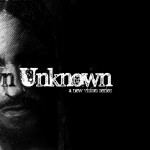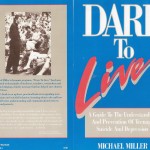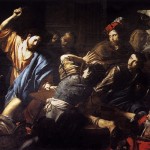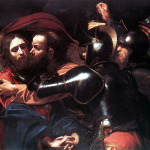Mark’s original ending at 16:8 leaves us unsettled. The resurrected Jesus never appears. The women who find the tomb empty runaway and tell no one.
As they entered the tomb, they saw a young man dressed in a white robe sitting on the right side, and they were alarmed. “Don’t be alarmed,” he said. “You are looking for Jesus the Nazarene, who was crucified. He has risen! He is not here. See the place where they laid him. But go, tell his disciples and Peter, ‘He is going ahead of you into Galilee. There you will see him, just as he told you.’ “Trembling and bewildered, the women went out and fled from the tomb. They said nothing to anyone, because they were afraid.
The end.
The copies closest to the original do not contain 16:9-20. (an apparent attempt to solve the messy feeling Mark leaves.)
Why doesn’t Mark record Jesus encounter with the disciples? Why does he promise to meet them in Galilee and not show himself in Jerusalem as Luke records? It may not be the ending we want. It’s certainly not how the other gospels end. But in this short finale, Mark challenges us to follow Jesus once again.
(Picture)
The Young Man
The figure that appears in the tomb is no ordinary angel. In fact Mark never calls him an angel at all, just a “young man.” The description is significant. Only one other person in Mark is so described. Mark14:51,
A young man, wearing nothing but a linen garment, was following Jesus. When they seized him He fled naked, leaving his garment behind.
Apparently Mark intended a connection between these two men. Both are called “young men,” both are described in part by their attire and both emerge at opposite ends of the crucifixion.
Whatever their historical identities, the links suggest they share a common meaning.
In Gethsemane
Here are three reasons the “young man” in the garden of Gethsemane represent the disciples.
1. He’s “following Jesus.”
In Mark, “following” is an act of discipleship. Three times in Mark Jesus calls men to follow him. In each instance they leave everything to “follow him.” The twelve are called “that they might be with him…”
2. He’s dressed in linen.
This is the same cloth wrapped around the dead body of Jesus (15:46). If the “young man” represents the disciples then his garment represents their call. In chapter 8, Jesus says,
If anyone wishes to come after Me, he must deny himself take up his cross and follow Me. For whoever wishes to save his life will lose it, but whoever loses his life for my sake and the gospels will save it.
To follow Jesus means to die with him.
3. He flees naked.
The young man appears immediately after Mark tells us, The young man appears at the end of
At the Tomb
If the first youth is a symbol of the disciples then the second must also.
1. His message to the disciples
“go tell the disciples and peter.”
2. He’s dressed in white
The clothing of the martyrs
The Challenge of a New Beginning















